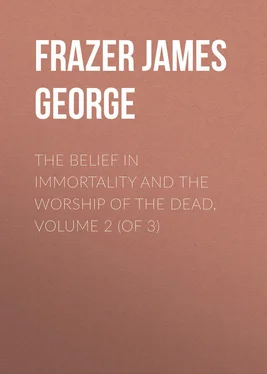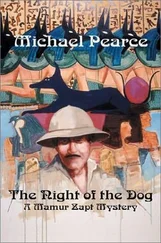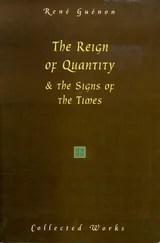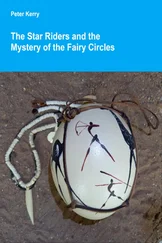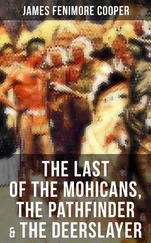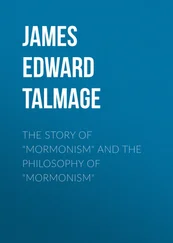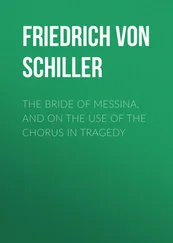James Frazer - The Belief in Immortality and the Worship of the Dead, Volume 2 (of 3)
Здесь есть возможность читать онлайн «James Frazer - The Belief in Immortality and the Worship of the Dead, Volume 2 (of 3)» — ознакомительный отрывок электронной книги совершенно бесплатно, а после прочтения отрывка купить полную версию. В некоторых случаях можно слушать аудио, скачать через торрент в формате fb2 и присутствует краткое содержание. Жанр: foreign_antique, foreign_prose, на английском языке. Описание произведения, (предисловие) а так же отзывы посетителей доступны на портале библиотеки ЛибКат.
- Название:The Belief in Immortality and the Worship of the Dead, Volume 2 (of 3)
- Автор:
- Жанр:
- Год:неизвестен
- ISBN:нет данных
- Рейтинг книги:3 / 5. Голосов: 1
-
Избранное:Добавить в избранное
- Отзывы:
-
Ваша оценка:
- 60
- 1
- 2
- 3
- 4
- 5
The Belief in Immortality and the Worship of the Dead, Volume 2 (of 3): краткое содержание, описание и аннотация
Предлагаем к чтению аннотацию, описание, краткое содержание или предисловие (зависит от того, что написал сам автор книги «The Belief in Immortality and the Worship of the Dead, Volume 2 (of 3)»). Если вы не нашли необходимую информацию о книге — напишите в комментариях, мы постараемся отыскать её.
The Belief in Immortality and the Worship of the Dead, Volume 2 (of 3) — читать онлайн ознакомительный отрывок
Ниже представлен текст книги, разбитый по страницам. Система сохранения места последней прочитанной страницы, позволяет с удобством читать онлайн бесплатно книгу «The Belief in Immortality and the Worship of the Dead, Volume 2 (of 3)», без необходимости каждый раз заново искать на чём Вы остановились. Поставьте закладку, и сможете в любой момент перейти на страницу, на которой закончили чтение.
Интервал:
Закладка:
"Some of these edifices were of an oval form, but they were much smaller. Each of them was surmounted by a small hut, which served as an oratory or house for the spirit of the dead; most of them have been destroyed by the lapse of time, and only traces of them are left scattered on the ground.
"The enormous blocks of coral employed in the construction of these monuments have all been brought by sea from Hifo to Mooa. They were got on the shore of the sea at Hifo, were hewn on the spot, and were transported in great canoes; then they were landed at Mooa and drawn on rollers to the place of their destination. These monuments are astonishing evidence of the patience which they must have demanded on the part of these islanders; they were ocular testimony to me of the high degree of civilisation which the natives had reached. Man must have risen to ideas of a much higher order than those of a simple savage before he would take so great pains for the single object of consecrating the memory of his chiefs.
"Such tombs are no longer built in Tongataboo: people content themselves with simple mounds surrounded by a row of posts or even an ordinary palisade. However, Singleton assured me that Finow the Younger had erected two great faï-tokas of stone in Vavao, one for the last Tooitonga, and one for his father." 281 281 J. Dumont d'Urville, Voyage de l'Astrolabe, Histoire du Voyage , iv. (Paris, 1832) pp. 106-108. Singleton was an Englishman, one of the crew of the Port-au-Prince , the ship in which Mariner sailed. When Dumont d'Urville visited Tonga, Singleton had lived as a native among the natives for twenty-three years; he was married and had children, and he hoped to end his days in Tongataboo. See J. Dumont d'Urville, op. cit. iv. 23 sq.
The Frenchman, De Sainson, who accompanied Dumont d'Urville on his visit to Tongataboo, has also described the tombs of the Tooitongas at Mooa from personal observation. I will quote his description: "It is in the heart of the forest that the ancient inhabitants of these countries, who idolized their Kings (Tooi-tongas), placed the tombs of that sacred race. These monuments of a more enterprising age still astonish the beholder by their mass and their extent. The fai-tokas , as these burial-places are called, are artificial eminences, on the top of which, in the form of a square, are three or four crosses of great granitic blocks arranged as steps, of which each block may be four or five feet high. If there is only a single step on the top of the mound, it is because only a single Tooi-tonga sleeps there in the grave; if the bones of a whole family are deposited in a common tomb, three or four steps, one above the other, mark their union in death. Some of these monuments which contain only a single body are arranged in an oval. I counted more than twelve of these immense structures, and yet we left a great many aside. I counted more than one stone between eight and fifteen feet long; and I conceived a high idea of those men of ancient days who erected over the remains of their kings these imperishable mausoleums, in an island based on coral, where it would be difficult to find a stone of two feet square. I imagined them to be very different from their effeminate descendants, those men of old who went in their canoes more than a hundred and fifty leagues to look for the enormous blocks of which these tombs are built, who cut them without the help of iron, and succeeded, by means unknown, in planting them on these hillocks, where by their own weight they are fixed for ever, like the Druidical monuments of Brittany, which one would say were dropped on earth rather by the magic of talismans than by the power of man.
"The present inhabitants of Tonga contemplate with a pious awe the fruit of the labours and patience of their forefathers, without dreaming for a moment of imitating them in their noble enterprises. A distant voyage affrights these degenerate scions of a hardy race, and the great canoes which still survive, sheltered under sheds very skilfully built, are little more than the useless encumbrance of chiefs grown languid in the long peace which has infected the whole people with habits of indolence.
"The most recent tombs consist of a small house enclosed on all sides, built on a rising ground, and shaded by a circle of mimosas, a tree sacred to the dead. Most of the illustrious graves are clustered together at Mafanga, a large village of which the whole territory is sacred on account of the hallowed relics which it contains. Along with the corpse they bury at the depth of a few inches small wooden effigies representing persons of both sexes. I had occasion to unearth a few of these little statues, and I remarked in them an astonishing feeling for artistic design." 282 282 "Extrait du Journal de M. de Sainson," in J. Dumont d'Urville, Voyage de l'Astrolabe, Histoire du Voyage , iv. (Paris, 1832) pp. 361 sq.
Some sixteen years later a Catholic missionary, living among the heathen population of Tongataboo, wrote thus: "Nothing equals the care which they take in the burial of their dead. As soon as a native has breathed his last, the neighbours are informed, and immediately all the women come to weep about the corpse. Here the men never weep. The body is kept thus for a day or two, during which they are busy building a tomb near the dwelling of the deceased's family. The sepulchral house is neat, built on an eminence, surrounded by a pretty fence of choice bamboos; the enclosure is planted with all kinds of odoriferous shrubs, especially evergreens. Finally, the monument is covered by a roof artistically constructed. For the tombs of kings and the greatest chiefs they go to distant islands to find huge stones to crown the grave. I have seen one twenty-four feet long by eight broad and at least eighteen inches thick. One of these tombs was built by the natives of Wallis Island, who brought the enormous blocks in immense canoes. It is wonderful for these peoples." 283 283 Jérôme Grange, in Annales de la Propagation de la Foi , xvii. (1845) pp. 12 sq.
Captain Erskine, who visited Tongataboo in 1849, says that "near the landing-place at the village of Holobeka, off which we were lying, we saw overshadowed with trees, one of the faitokas , or old burial-places of the country, which, although no longer 'tabu,' are still in some cases used as places of sepulture, and very carefully kept. This one was an oblong square platform a few feet high, surrounded by a stone wall, the interior being beautifully paved with coloured corals and gravel; the house or temple, which Captain Cook and others describe as occupying the centre, having been, I suppose, removed. I saw but one other of these monuments during our stay among the islands, the largest of which stands on several rows of steps, as described by all former visitors." 284 284 J. E. Erskine, Journal of a Cruise among the Islands of the Western Pacific (London, 1853), p. 130.
Thomas West, who lived as a missionary in the Tongan islands from 1846 to 1855, tells us that "chiefs were usually interred in tombs, constructed of blocks of sandstone, cut from suitable localities by the seashore, where, at a little depth from the surface, layers of hard and durable sandstone are found, even on many of the coralline islands. In several of the ancient burial-places, similar stones, arranged in terraces, surround the whole enclosure. Some of these are of immense size, and seem to indicate the possession, on the part of former inhabitants, either of greater energy than the present race, or of better tools and appliances. The burial-places of the Tonguese are always surrounded by the most imposing foliage of the tropics, and placed in sequestered spots. A mound of earth is raised, of dimensions varying with the necessities of the place; and, whenever a grave is opened within the limits of this mound, it is always filled up with beautiful white sand, and never contains more than one body. No particle of clay or earthy mould is allowed to touch the remains of the dead. The sand is brought in baskets by the chief mourners, who sometimes sail or journey many miles to procure it; and each person pours the contents into the grave until it is sufficiently filled up. The top of the grave is, afterwards, carefully tended and decorated with black pebbles and red coral, arranged in various devices, which have a very pretty effect. Small houses are also placed over the tombs of the chiefs and gentry." 285 285 Thomas West, Ten Years in South-Central Polynesia (London, 1865), pp. 268 sq.
Интервал:
Закладка:
Похожие книги на «The Belief in Immortality and the Worship of the Dead, Volume 2 (of 3)»
Представляем Вашему вниманию похожие книги на «The Belief in Immortality and the Worship of the Dead, Volume 2 (of 3)» списком для выбора. Мы отобрали схожую по названию и смыслу литературу в надежде предоставить читателям больше вариантов отыскать новые, интересные, ещё непрочитанные произведения.
Обсуждение, отзывы о книге «The Belief in Immortality and the Worship of the Dead, Volume 2 (of 3)» и просто собственные мнения читателей. Оставьте ваши комментарии, напишите, что Вы думаете о произведении, его смысле или главных героях. Укажите что конкретно понравилось, а что нет, и почему Вы так считаете.
